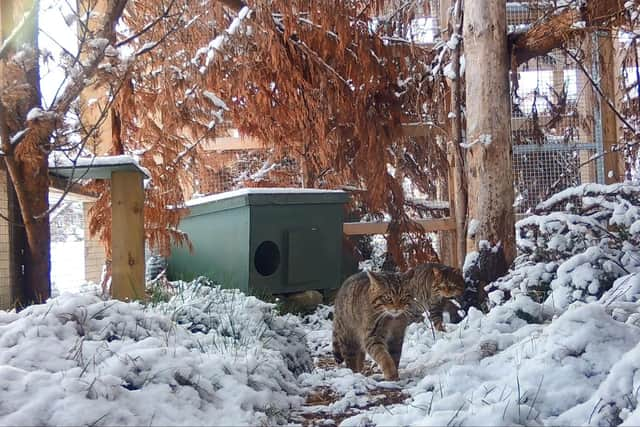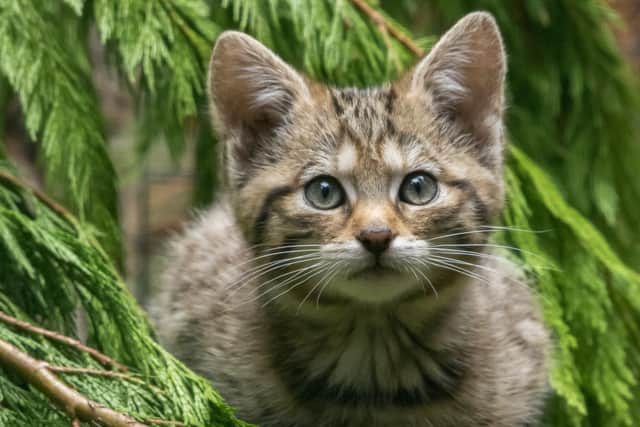Scottish wildcats: Kitten release plan to save critically endangered species
The cats are part of the first ever breeding season at the Saving Wildcats breeding for release centre in the Royal Zoological Society of Scotland’s Highland Wildlife Park, located near Kingussie.
The project is working to restore the species in Scotland, which is considered critically endangered, by breeding and releasing them into the wild.


Advertisement
Hide AdAdvertisement
Hide AdKittens from this season, which could be born as early as spring, will be among the first to be released in parts of the Cairngorms in 2023.
David Barclay, Saving Wildcats conservation manager, said several of the wildcats are now paired and settled – just in time for Valentine’s Day – and are showing encouraging mating behaviours.
“Wildcats are Scotland’s most iconic animal but also one of our most endangered,” he said.
“Without future releases, the wildcat’s days in Scotland are numbered.


“Once widespread in Britain, habitat loss, hunting and inter-breeding with domestic cats have all taken their toll, leaving this incredible species on the verge of extinction.
“We are hopeful that kittens born around April to May will be among the first released into carefully selected locations in the Cairngorms.”
Saving Wildcats is led by the Royal Zoological Society of Scotland in collaboration with other agencies including NatureScot, Forestry and Land Scotland and the Cairngorms National Park Authority.
The six-year project is supported by £3.2 million of EU funding and co-funded by several partners including NatureScot and the Scottish Government’s zoo and aquarium conservation fund.
A message from the Editor:
Thank you for reading this article. We're more reliant on your support than ever as the shift in consumer habits brought about by coronavirus impacts our advertisers.
If you haven't already, please consider supporting our trusted, fact-checked journalism by taking out a digital subscription.
Comments
Want to join the conversation? Please or to comment on this article.